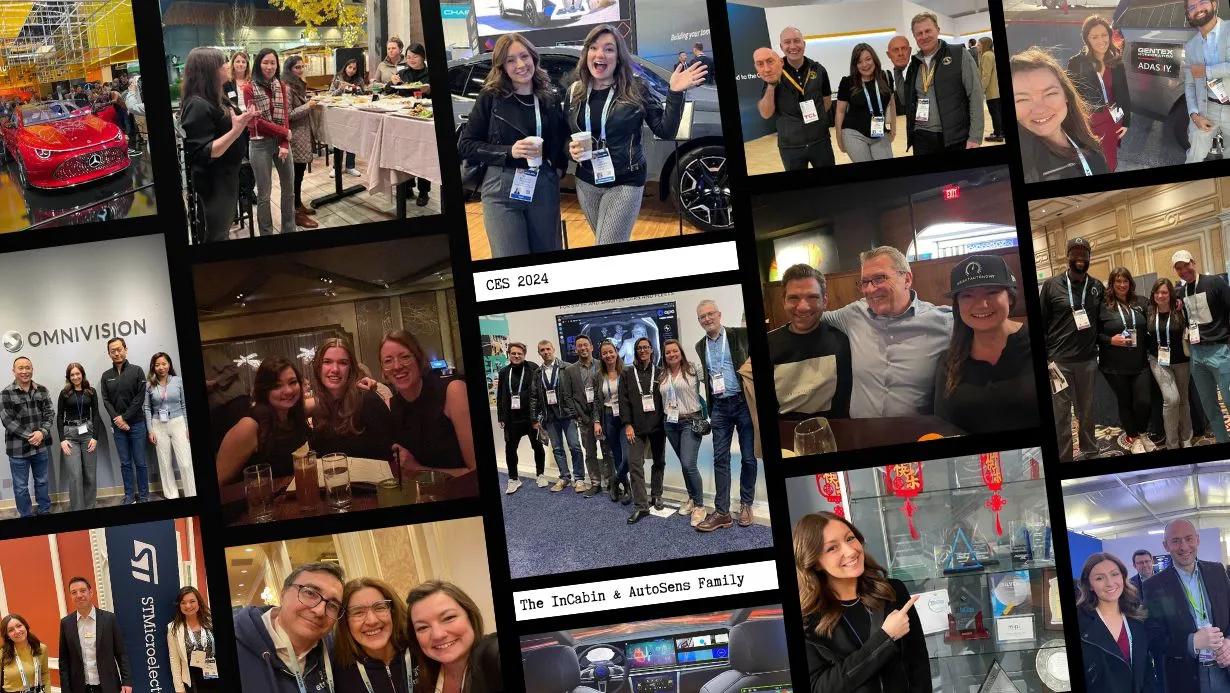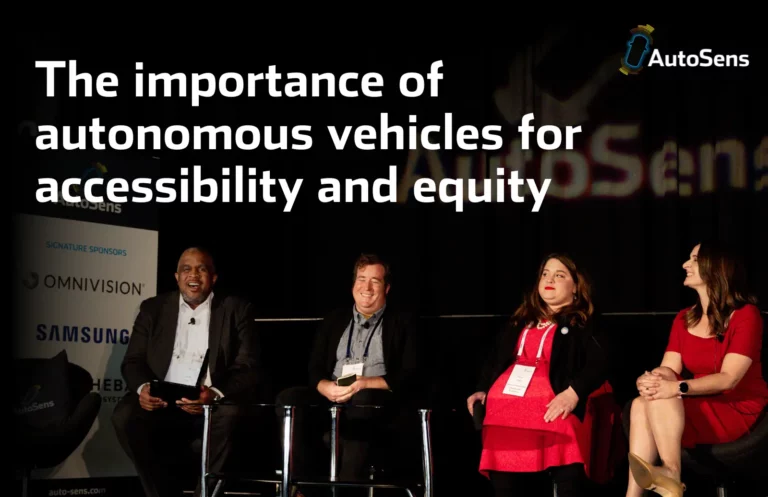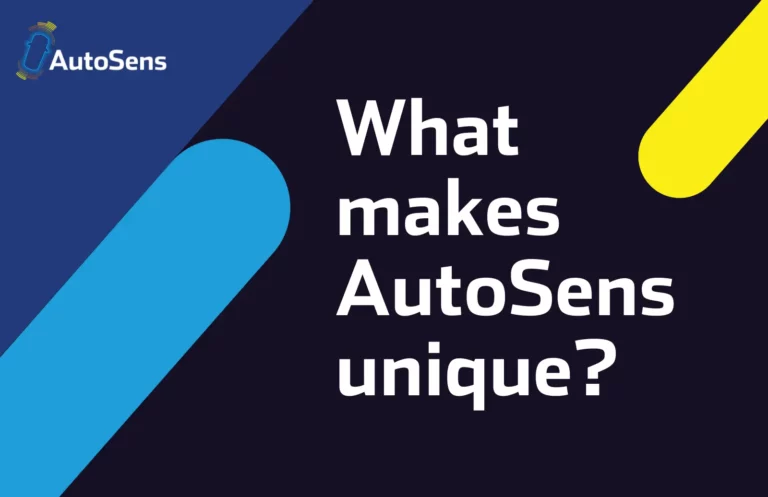What better way to kick off 2024, than a visit to CES to see the latest tech in the ADAS & AV industry? Our experts Sara Sargent and Kayleigh Pearson headed to the show in Las Vegas to gather the latest movements in the industry. Read Kayleigh’s first report…
The week of CES went by so quickly, with Sara and myself attending Analyst Tours, Press Releases and Booth Visits – and experiencing an incredible amount of innovation in the automotive industry along the way. Having returned home with multiple notepads full of notes we are very excited to share the newest company, technology and partnership discoveries. With too much content for one release, this is the first of multiple reports that will cover the discoveries for both the AutoSens and InCabin communities.
We started the week attending the media days which included press announcements from companies such as LG, Valeo, Bosch and Hyundai. You can check out all the press releases here. Following this we attended the Analyst tours, visiting many different Tier 1’s and industry leaders private tours.
Hyundai had a big focus on serving humanity with their “ease every way” motto. They are investing $7B on hydrogen hubs in the USA as they work towards a hydrogen powered future. The other focus area for Hyundai was building on Software Defined Vehicle (SDV’s) to expand to “Software-Defined Everything” (SDx). Hyundai with their global software hub, 42dot, introduced core technologies that are under development for smart mobility solutions, stating that AI and Software are most important. We really liked their approach on wanting to make services fair, accessible and safe for all.
We found it very exciting to attend Valeo’s analyst tour to learn about their new partnership with Teledyne FLIR, bringing thermal imaging to automotive. This makes them the first to deliver Automotive Safety Integrity Level B thermal imaging technology for night vision ADAS. Read more about this news here.
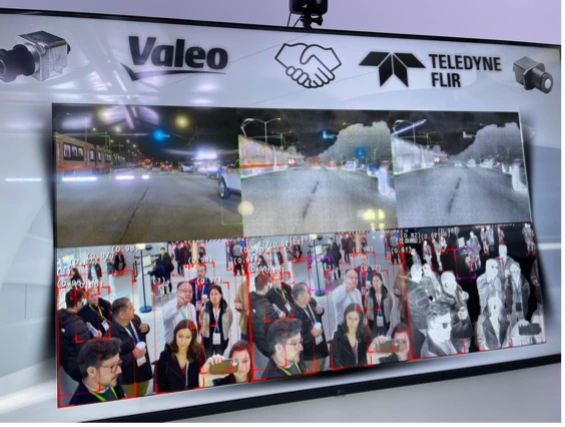
They are blending thermal and RGB to enhance safety which will work alongside Valeo’s range of sensors and their ADAS software stack. Thermal use in automotive is a huge passion of Sara’s and she has been getting me up to speed on the importance of thermal too, so we were very happy to hear Valeo announce they have already secured a design win from a leading global OEM, who will be adding it to their new generation ADAS system. To support this in the future, they are working with Saint Gobain on windscreen glass that thermal cameras will be able to see through. Valeo also announced they are working with Applied Intuition to provide a digital twin platform for ADAS sensor simulation for OEM’s to test and validate ADAS perception.
Socionext showed a very impressive low power, 60GHz radar for child presence detection which included the footwell. They are also using Radar for security monitoring such as theft detection and prevention. They were also showing their gesture controlled touchless display, which was interesting to see, with touchless applications having a major role in increasing user safety. Socionext have joined us at InCabin before and will be back for InCabin Europe, so we are excited to be seeing more from them in Barcelona!
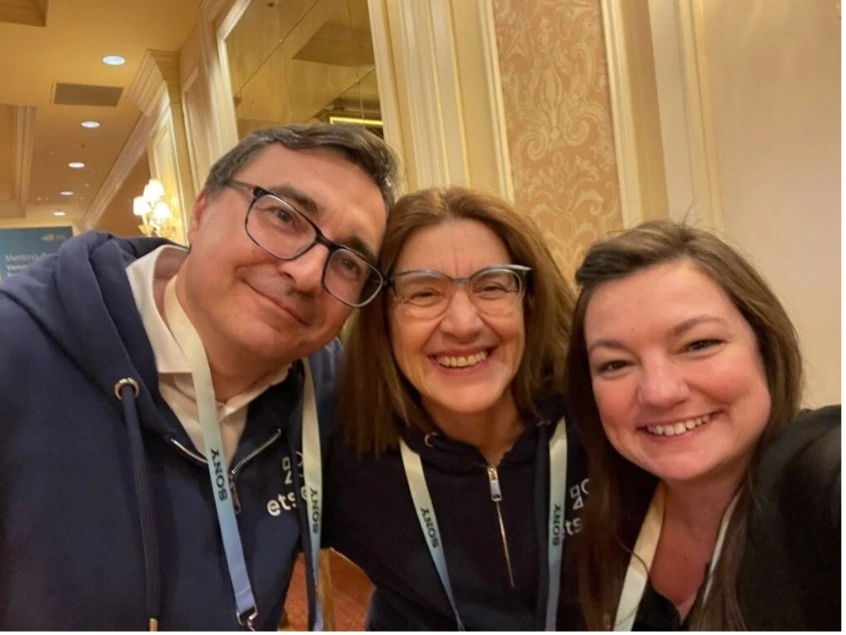
Sara had a very interesting find, a new start-up company Etseme who were founded in 2020 and are based in France. They were showing a stress detection application for in-cabin which was using Radar and AI to detect physiologic signals. Anka Seyrac, Founder and CEO, explained to Sara they have a partnership with a well-established Radar supplier.
Their first install is an industrial application with expensive heavy machinery where operators are more likely to damage machinery if they are stressed. Anka and other Founder Frederic Seyrac both have very impressive backgrounds, with Frederic from technology and Anka from business for transportation, they also have a very strong team that is composed of 3 PHD’s and 4 engineers. We are very excited to see what is next for them and will be following their journey.
Another exciting analyst tour was one from Mitsubishi Electric. With so many innovative ideas and technology being exhibited it was very impressive. They were showcasing their V2V solution for intersection warnings, brake light detection and driver warnings which included their Advanced Intersection Collision Warning (AICW) and Dangerous Situation Warning (DSW).

Mitsubishi Electric are providing DMS, OMS, Radar Fusion and Child Presence Detection in the footwell too. Their DMS is detecting emotion, heartrate (BPM), drowsiness, smoking and phone usage. The team explained that there are 3 main medical events that cause car accidents, with heartrate and breath rate being indicators for all 3 of them. Read more about their DMS here. Mitsubishi were also displaying the system that they have developed to show how thermal could be used inside the cabin. This is to detect the drivers head for driver detection, hands on wheel detection, macro distractions/macro movements, and biometric data, with the benefits to this being protecting data privacy with low resolution. Further to this, they displayed their contactless access which uses the rear camera to do Face ID to open the boot of the car. Next in line for Mitsubishi Electric is to add blood pressure detection and intoxication detection and notably, more information to be added to the 9 inferences currently used to determine distraction.
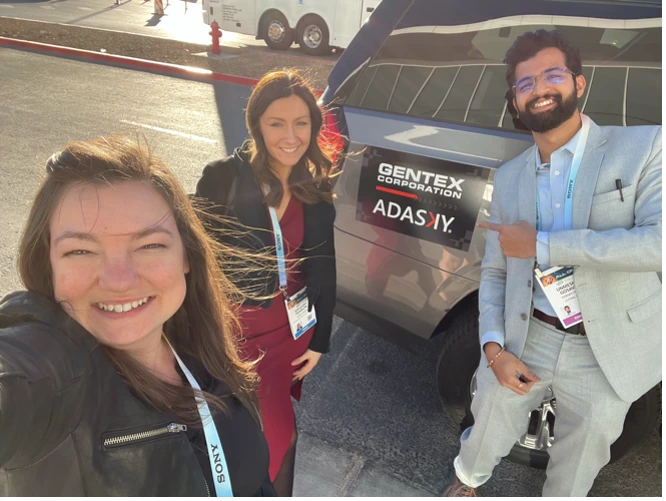
Another partnership announcement was that of Adasky and Gentex, who announced their thermal collaboration to mass produce. With a full display mirror showing blended CMOS and thermal image of the rear view, their blended view is adjustable for various use cases such as headlight glare at night-time, where the weight of the thermal image would be increased.
Adasky have the ability to provide hardware and perception software or just hardware to be more flexible and work with a wide range of partners. Read more about what Adasky and Gentex showed at CES here.
P3 Partner Pavillion was another very interesting booth we found at CES. P3’s SPARQ, which is supported by the partners we met at their P3 Partner Pavillion, is a user interface OS based on Android Auto. The P3 is enabled and stands out for ease of use and integration because of the complete ecosystem of partners that P3 integrates. Partners provide cyber security, cameras, SW longevity testing, browser, analytics, physical screen and application testing, and other hardware.
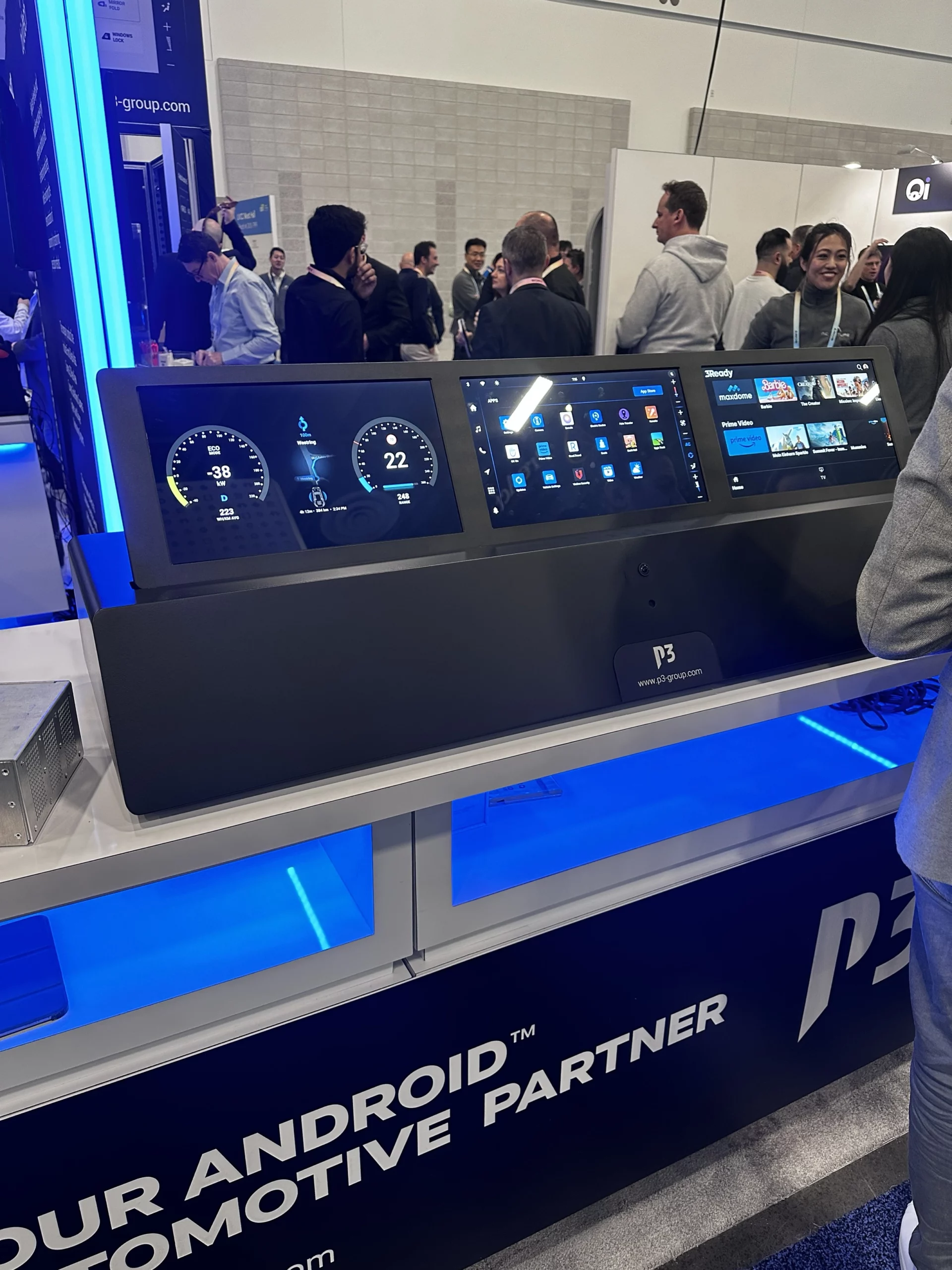

P3’s SPARQ already has wins with Renault and Volvo trucks and they will be ready to upgrade to Andriod 14 this year to provide more functionality, more advanced API and to be faster. P3’s SPARQ supports vehicles beyond cars, including motorcycles and heavy trucks.
To introduce the partners of P3:
Lantronix: P3 integrates their software, and they provide hardware to Qualcomm and have had a 10+ year relationship with them.
BuyUTech: They are providing cameras for ADAS and for DMS they are providing the hardware and software. BuyUTech have won an OEM in Turkey and are now expanding into the US and European markets. They support applications like 360 truck view and also truck side mirrors.
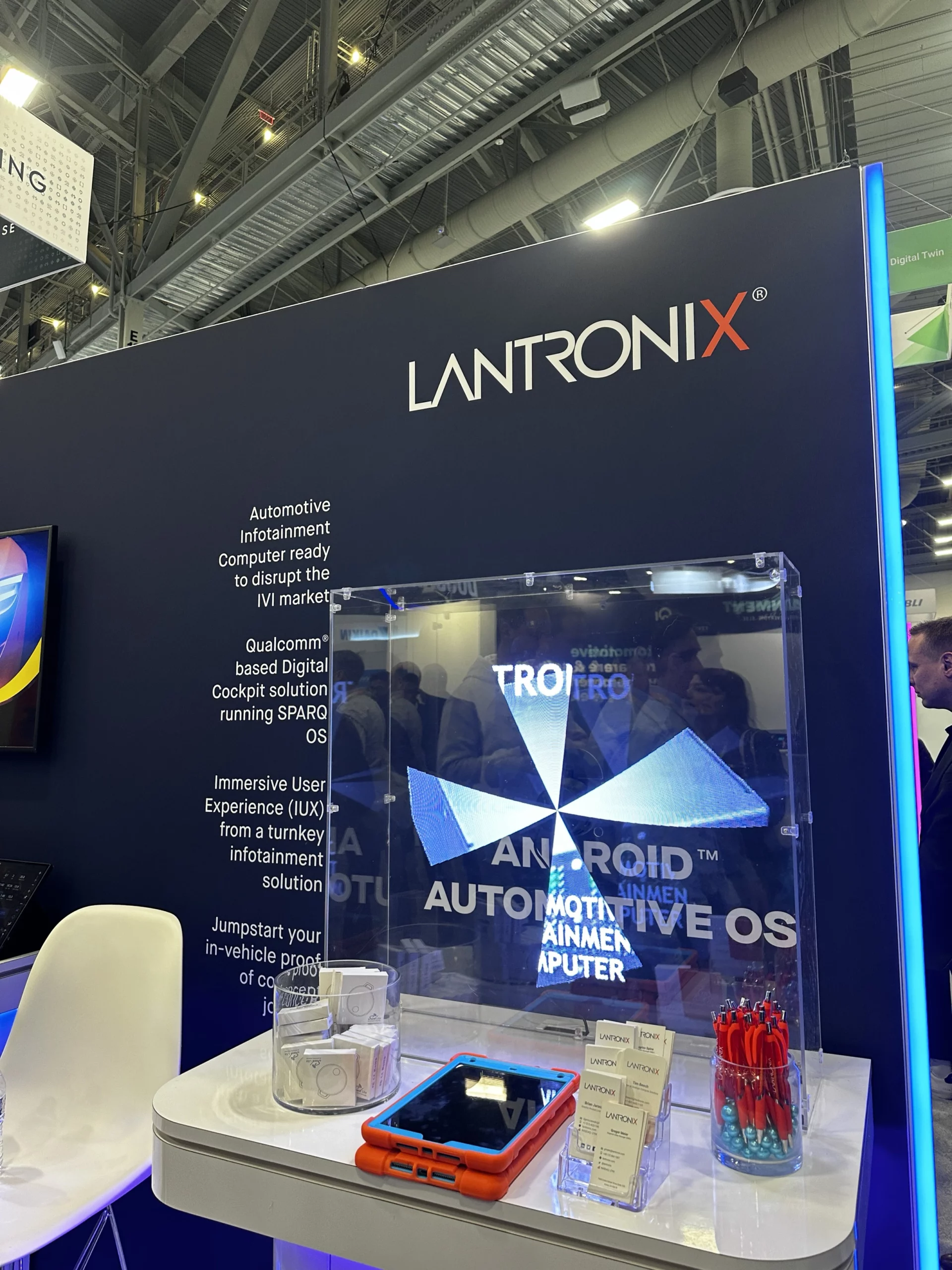
VicOne: Providing cyber security for Android Auto that can monitor to identify attacks on cars. Their solution is called “Smart Cockpit Protection”. It is a cyber security system, not an application layer, providing data privacy protection, intrusion detection and prevention. VicOne consult on security, educate clients about cyber security and provide continuous penetration testing and security monitoring.
Profilence: They simulate how software performs after months or years of use. The desktop stimulates the end user and it can take about a week to perform testing depending on the project. Profilence collect and provide analysis for data on a clients system’s performance.
Adapta: They are a small company with about a dozen people. Adapta do automotive testing by getting data from the ECU and making it available. They have a robot that acts as a hand to touch the screen, which can do a range of movements such as 2 fingers to act as pinch motion, so it interacts like a human with the screen. They handle testing for infotainment head units, Recalls like black screen, MTBF – Mean time between failure, and more.
Vivaldi: Providing application on SPARQ called The Vivaldi Browser. The founder Jon Von Tetzchner’s background was in building Opera which was later sold. He explained to us that they provided the first browser for Android Auto, Renault, CARIAD, Audi, and Polestar, 2 years ahead of Google’s 1st release. Vivaldi is employee owned with 2.8 million users monthly. They have an ad blocker, powerful, feature rich web browser where you can have your tabs where you like them, in lists even. It is a much more dynamic organization with sessions and users have the ability to search for tabs. You can connect a keyboard, perform conferencing, and OEM’s can choose bookmarks and they comply with regulation. The size can scale to the user’s preference easily and across platforms – mobile, PC, Mac, Linux, Cars and IOS. Vivaldi do not do profile users; this was vital to Jon as data privacy was of utmost importance. Uniquely, Jon puts effort into reaching out to governments to convince them of the same.
As you can see, we saw a hugely exciting range of cutting-edge tech and met with a lot of innovative companies during our time at CES – it’s probably hard to believe this isn’t even half of them! We are excited to share the rest with you, stay tuned…
Ready to meet companies at the cutting-edge of ADAS and AV technology? Join us at AutoSens in Detroit 21-23rd May, get your pass here.
Is InCabin more relevant to you? Get your USA pass here.
